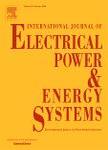版权所有:内蒙古大学图书馆 技术提供:维普资讯• 智图
内蒙古自治区呼和浩特市赛罕区大学西街235号 邮编: 010021

作者机构:Tianjin Univ Minist Educ Key Lab Smart Grid Tianjin 300072 Peoples R China Hebei Univ Technol State Key Lab Reliabil & Intelligence Elect Equip Tianjin 300072 Peoples R China
出 版 物:《INTERNATIONAL JOURNAL OF ELECTRICAL POWER & ENERGY SYSTEMS》 (国际电力与能源系统杂志)
年 卷 期:2021年第130卷
页 面:106998-106998页
核心收录:
基 金:National Key R&D Program of China [2020YFB1506804] National Nature Science Foundation of China Nature Science Foundation of Hebei province [E2019202146] China Postdoctoral Science Foundation [2019M660966]
主 题:Island microgrid Multi-period investment planning Stochastic robust hybrid optimization Mixed integer linear programming
摘 要:Microgrid is becoming an effective way to solve the power supply problem in off-grid islands. The investment economy is one of the key factors affecting its development and application, which is very challenging due to various uncertain information involved in the investment decision process. In this paper, a multi-period investment planning model is proposed to support decision-making for the stakeholders in determining the optimal sizing as well as investment timing of distributed energy resources of an island microgrid. The applicability of the model in dealing with various uncertainties is enhanced via a hybrid optimization framework, in which the longterm uncertainty of energy price fluctuation is captured by a stochastic programming approach and the shortterm variations of renewable energy generation and load are addressed through robust optimization method. The dynamic information of load growth, unit cost variation and device degradation are considered to make the decision more practical and economically attractive. The multi-period investment planning model is formulated as a mixed integer linear programming problem, and the conservatism of the decision can be flexibly adjusted by regulating the robustness of the model. Simulation results based on actual data illustrate that the proposed model shows better economic and synergetic performances than the traditional multi-year optimization model, with the total planning cost dropped by nearly 3.6%, the initial investment cost reduced by nearly 36.6%, and the utilization rate of renewable energy increased by nearly 5.4%. In addition, the sensitivity analyses for load growth rate, loan ratio, unit cost, and uncertain budgets further verify the applicability of the proposed model under various conditions.